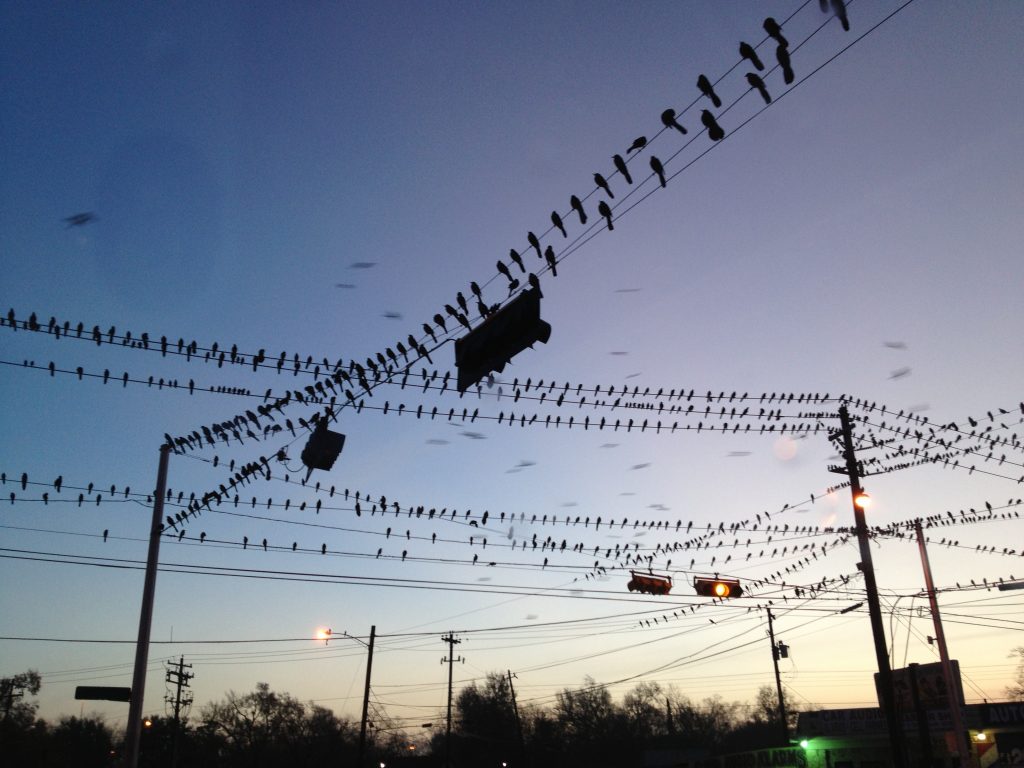 The blackbirds (I’m sure an ornithologist could give me their proper name) were covering every wire. It was clear that if I proceeded through the intersection, I risked an unwanted bird deposit on my car. What should I do?
Consider the options:
The blackbirds (I’m sure an ornithologist could give me their proper name) were covering every wire. It was clear that if I proceeded through the intersection, I risked an unwanted bird deposit on my car. What should I do?
Consider the options:
- I could choose a different route and hope that I wouldn’t encounter birds at other intersections. It would take longer, possibly causing me to miss my flight, but I could avoid the mess on my car.
- I could wait the birds for the birds fly away, but since that might take several hours, I would certainly miss my flight.
- I could try to scare the birds away by honking my horn, yelling at them, or throwing something. Of course, that might result in an even bigger deposit on my car, and given my throwing accuracy, there’s a high likelihood of collateral damage.
- I could drive through the intersection, get to the airport on time, and wash my car later if necessary.
The answer seems fairly obvious, doesn’t it?
As a leader, do you ever come upon a similar intersection? You’re approaching an important decision, and you know that people are watching and waiting. Some of them may create a mess if you don’t make the decision that they want. So what do you do? Do you let this risk immobilize you? Force you into a decision that is less than ideal? Unfortunately, just the presence of black birds and the threat of droppings can derail us.
Before I close, let me be clear about two things. There is a difference between blackbirds on the lines and a truck that’s barreling into the intersection. If I’m going to be broadsided, then it’s obvious that I shouldn’t proceed. The same is true with leadership decisions. Second, the best decisions emerge out of healthy dialogue with other leaders, those that are neither cawing crows nor dangerous trucks. The challenge is learning how to read and navigate each unique leadership situation.
It’s easy to receive my blogs by email. Just sign-up on Feedburner by clicking here.]]>
 The blackbirds (I’m sure an ornithologist could give me their proper name) were covering every wire. It was clear that if I proceeded through the intersection, I risked an unwanted bird deposit on my car. What should I do?
Consider the options:
The blackbirds (I’m sure an ornithologist could give me their proper name) were covering every wire. It was clear that if I proceeded through the intersection, I risked an unwanted bird deposit on my car. What should I do?
Consider the options:



